Pimples on the skin cause discomfort to a person. This trouble occurs on the face, body, and scalp. Rashes on the head can appear in men, women and even children, regardless of age. In representatives of the stronger sex, this problem is diagnosed more often. Let's consider what pimples on the head in the hair of men are, the causes and treatment of this pathology.
Why does a rash form in the hair?
Pimples on the scalp are formed under the influence of various factors. To successfully deal with them, you need to determine the reasons that caused them.
Most often, a rash on the head under the hair causes:
- Stress . This phenomenon affects people of all ages - infants, schoolchildren, teenagers, young and elderly men.
- Wrong selection of shampoo . If you wash your hair with shampoo designed for a different skin type, you will experience rashes, itching and dandruff.
- Wearing a headdress made of artificial materials , under which the skin sweats, can cause rashes on the scalp in men.
- Irregular, too infrequent hair washing .
- Digestive diseases .
- Purulent acne on the head can occur due to skin lesions , microcracks, scratches into which pathogenic bacteria enter.
- Pimples can appear under the hair when infected with fungi or mites . Such lesions are often itchy and accompanied by dandruff.
- Small pimples that appear on the scalp under the hair may be a sign of an allergic reaction. for food, medicine or cosmetics;
- Excessive oily skin contributes to the appearance of rashes due to hormonal imbalance in the body or heredity.
- The problem can be caused by a long-term deficiency of vitamins or microelements .
- Skin health is worsened by bad habits and poor diet. . Pimples on the head in the hair can appear in an adult due to the abuse of fast food, cigarettes and alcohol.
- The sudden appearance of rashes may indicate the development of some disease , such as chickenpox, eczema or psoriasis.
There are many causes of skin diseases. To determine how to get rid of them, it is important to understand why acne appears on the head.
Types of acne in hair
Hair rashes can manifest themselves in different ways. Their appearance depends on the reason why acne appeared.
Most common small red pimples . May be caused by an allergen or an incorrectly selected cosmetic product. If they don't hurt or itch, you can wait a while. These rashes often go away on their own if the irritating factor is removed.
If the rash starts to itch , then first of all you need to check your head for lice infestation. When this insect bites through the skin, pimples form at the site of the lesion, painful when touched. In addition to pediculosis, such lesions can be caused by allergens, contact with headwear, and fungi.
A particular nuisance is the recurring painful pimples on the scalp. These are cysts, nodules, pustules. Usually the mechanism that “starts” the process is banal combing. At the site of scratching, a bacterial infection is activated and penetrates deep into the tissue. Under the influence of pathogenic bacteria, boils filled with pus are formed.
Often hair forms acne , or internal acne. Their cause is blockage of the sebaceous gland ducts. They rarely become inflamed and do not cause much discomfort.
What to do if a rash appears on your head?
Pimples on the scalp in men's hair can be caused by various reasons, and they should be treated immediately. The sooner measures were taken to get rid of them, the easier it is to achieve a positive result.
Acne treatment should start with the following:
- Adjust nutrition . It is necessary to review the daily menu, increase the amount of foods rich in vitamins and microelements (vegetables, fruits, cereals, dairy products). The consumption of sweets, canned food, salty, spicy and smoked foods, and baked goods should be reduced as much as possible.
- Say goodbye to bad habits . When scalp hair acne becomes a problem, alcohol and nicotine will make it worse and reduce the effectiveness of treatment.
- Get rid of the allergen , if there is a suspicion that acne on the head appeared precisely for this reason. This applies to both food and medicines, shampoos and conditioners.
- Visit a dermatologist , if the rashes have not decreased. Pimples in the scalp and hair in men have different causes; effective treatment can be prescribed only after a thorough diagnosis of the problem.
Hair rash treatment methods
How to treat acne on the head and hair? The treatment regimen should be determined individually by a dermatologist. Drugs and procedures are selected taking into account the factor that caused the disease.
Some tips for dealing with breakouts
Let's look at the main tips on how to get rid of acne on your head:
- Choose the right hair care products . Men's acne shampoo containing salicylates dries the skin well and helps to quickly get rid of festering lesions. Preparations with selenium sulfide will help fight itchy rashes. Dandruff can be cured by using antifungal additives in hair washes. Tar soap or shampoo will eliminate the symptoms of seborrheic dermatitis.
- Use hair styling products carefully . They can clog pores, dry out the skin or, conversely, make it oily, contributing to rashes, dandruff and itching.
- Pimples on the scalp in the hair of women and men cannot be treated with medications containing benzoyl peroxide . This substance is successfully used to combat acne on the body. But upon contact with hair, it worsens its condition, making it brittle, damaging and discoloring.
- Cut your hair shorter . The longer the hair, the more difficult it is to keep the scalp healthy. Their constant contact with the skin on the back of the head and temples increases sweating and promotes the growth of bacteria that cause inflammation and small pimples.
- Don't squeeze out inflammation . This is how the infection spreads and becomes wider.
Drug therapy
When rashes and inflammations on the skin occur bacterial in nature , the doctor may prescribe antibiotics (erythromycin, azithromycin, tetracycline, etc.) both in tablets for internal use and in the form of acne ointments, gels, solutions for topical treatment. Used in combination with antibiotics to treat skin diseases antifungal agents .
In cases where skin problems are only a consequence, but the cause is gastrointestinal disease , the treatment will be long and includes preparations for improving digestion, normalizing microflora, enterosorbents .
To deal with the consequences allergies the doctor will prescribe antihistamines (Telfast, Zodak, Loratadine, etc.). To ensure recovery occurs as quickly as possible, supplements that normalize the functioning of the nervous system (Glycine, Persen, Novo-passit, tinctures of soothing herbs) may be prescribed.
If the skin rash is severe and does not respond to other types of treatment, your doctor may recommend isotretinoin. This drug is used to combat acne simplex, seborrheic dermatitis and rosacea.
Cure acne, the cause of which lies in hormonal disorders , will help antiandrogens . If it is established that there is a deficiency of nutrients in the body, treatment consists of taking vitamin complexes, brewer's yeast, and microelements (selenium, zinc, calcium).
Local preparations have less pronounced side effects, so for mild forms of the disease they are prescribed more often. These are antibiotics in the form sprays , gels (active ingredient erythromycin, clindamycin), ointments Bactroban, Boro-Plus, Levomekol, Ichthyol. Inflamed areas can be treated with salicylic or camphor alcohol , peroxide . To combat seborrhea and rashes caused by fungi, special shampoos (Nizoral, Ketoconazole).
You cannot select medications to combat rashes on your own. Only a doctor can determine exactly what caused the problems and select the appropriate drug.
Home remedies for acne treatment
If the rashes are of little concern and do not spread further, you can try to get rid of them yourself. Let's look at how to cure inflammation on the scalp at home.
A noticeable effect in solving this problem is shown by the use of the following natural remedies:
- tea tree oil ;
- natural apple cider vinegar ;
- aloe vera juice ;
- calendula infusion (at the rate of 2 spoons per glass of water).
You can wipe the inflamed areas several times a day. Rinsing the hair with an infusion of yarrow, St. John's wort, string, sage or plantain (5 tablespoons of herb per 1 liter of boiling water) helps improve scalp health. The rash can be wiped with dandelion decoction (1 spoon per glass of boiling water) and make lotions.
It is useful to replace store-bought shampoo with an infusion of soap nuts. It's not difficult to prepare. Several nuts need to be left in warm water for 5-6 hours, ground, added to the water and strained. The resulting product is stored in the refrigerator.
Instead of shampoo, you can wash your hair with a mixture of henna and eggs. To prepare it, pour several tablespoons of colorless henna with warm water for an hour and add an egg. The mixture is applied to the hair, massaged into the scalp and rinsed thoroughly with warm water.
Prevention
To prevent a rash on the head from becoming a real problem, you need to follow certain recommendations:
- Wash your hair and scalp in a timely manner ;
- choose the right shampoo, taking into account your hair and skin type ;
- do not touch the scalp with your hands, do not comb it ;
- keep combs clean to prevent the spread of fungi and germs ;
- eat a properly balanced diet ;
- strengthen the immune system .
In most cases, home methods and means of prevention can quickly eliminate the problem of rashes on the head. If the process spreads further, there is no need to wait. The sooner treatment is prescribed, the more effective it will be.
Pimples form not only on the face or body, but also on the head in the hair. The most interesting thing is that these rashes appear more in men, and of different ages, and at 18, 30, 40, and 50 years old. They are usually localized on the occipital, scalp, back parts of the head, as well as on the temporal areas.
Despite the fact that pimples on the hair are barely noticeable, and at first glance the problem of their appearance is not as depressing as their appearance on other parts of the body, it can cause a lot of inconvenience for a man. They can itch and itch, and even cause severe pain when scratched.
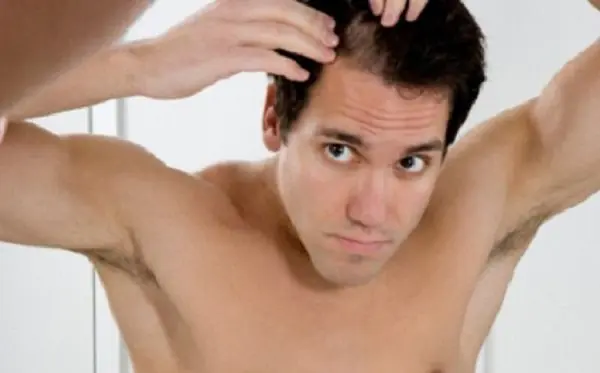
Fortunately, there are many folk remedies that can help get rid of them. And they all do not contain any harsh chemicals or other ingredients that often do more harm to your hair and scalp than good. But first, let's look at what causes acne in the hair and how it forms.
Causes of acne on the head in men
Pimples on the head form in the same way as on the face and other parts of the body. Our skin produces an oily, fatty substance called sebum, which keeps it smooth and naturally hydrated.
Sebum is produced by the sebaceous glands, which are located just below the surface of the skin. It makes its way to her through:
1) hair follicles (as shown in the figure below) or
2) through pores on hairless areas of the skin (for example, on the face).
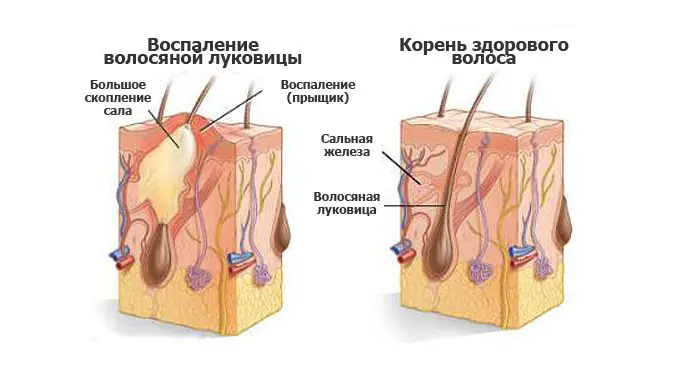
For various reasons, some men produce more sebum. And generally, the more sebum the skin creates, the more oily it becomes, causing acne.
- Hormonal changes are the most common cause of their occurrence on the scalp. For example, they are often observed in teenage boys due to an increase in the production of sex hormones. During this period, there is increased sebum production, causing clogged skin pores. All this increases the risk of acne.
- Using shampoos or other hair products that contain many chemicals and fragrances. Any type of allergy can cause a rash, so it is advisable to do a test to detect an allergic reaction to any cosmetic products.
- Constant mechanical stress: wearing tight hats or the habit of scratching the skin.
Studies show that smokers are more likely to develop acne than non-smokers.
- They can also appear as a result of taking steroid-type medications (anabolics, corticosteroids, etc.).
- Pimples in the hair can also be caused by internal causes, such as immune disorders, digestive or liver problems resulting from the use of antibiotics.
- Eating unhealthy foods that are deficient in nutrients. Carbonated drinks, fried foods, pizza, sweets and alcohol put stress on the liver, the main filter of our body.
- Constipation is one of the most common causes of acne in adults. When the body is overloaded with toxins, it begins to dump waste into the skin, forming skin rashes.
- Other causes of this skin defect can be stress, fatigue and depression.
Treatment of acne in hair with folk remedies
Men can get rid of them using proven remedies that are easy to prepare at home.
Apple vinegar
Apple cider vinegar is one of the most popular folk remedies to help get rid of acne. The malic acid contained in vinegar has disinfecting properties and inhibits the production of sebum. Another benefit of vinegar is that it helps restore the pH balance of the skin, which is necessary to protect it from germs, bacteria and pollution.
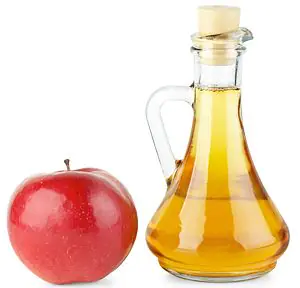
You will need:
- 1/4 cup apple cider vinegar
- 1 tablespoon raw honey (optional)
- 1 glass of water
Preparation:
- Simply mix vinegar, honey and water and massage your scalp with this mixture.
- Leave for 2-3 minutes, then rinse thoroughly with water.
Aloe vera
In Ayurveda, aloe vera is traditionally used to treat acne because this plant has anti-inflammatory and antibacterial properties. Apart from this, aloe vera nourishes the scalp and hair follicles well, which promotes healthy hair growth and also relieves redness and itching.
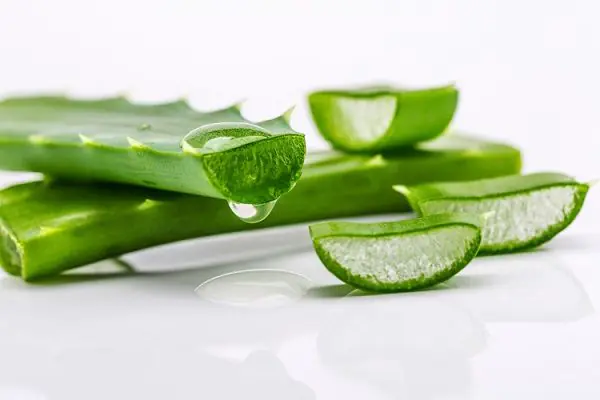
You will need:
Preparation:
- Apply aloe vera juice to the scalp and keep it for 15-30 minutes.
- Then rinse with water.
It will also be beneficial to take 1 teaspoon of aloe vera juice in the morning. It is best to use fresh juice extracted from the leaves. If you buy it from a store, make sure it contains minimal additives.
Tea tree oil
This oil is often used for problematic scalp. In fact, it acts as an antiseptic that disinfects pores and dries out pimples quickly. In addition, it kills bacteria and also relieves itching. Reviews after using the oil are usually positive.
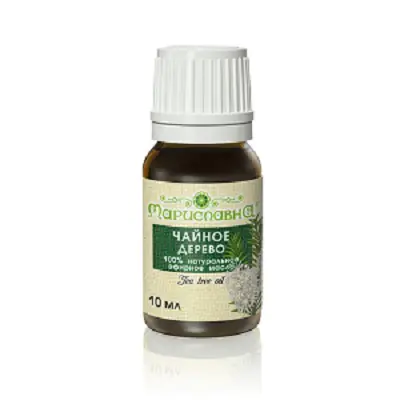
- First, mix 5 drops of tea tree oil with 2-3 tablespoons of olive oil.
- Then apply to your head and massage.
- Leave on for 1-2 hours and rinse off.
- Repeat this procedure once a day.
- When washing your hair, add 2-3 drops of tea tree oil to the shampoo you use.
- Leave this shampoo on for 3-5 minutes, then rinse thoroughly.
Garlic
Garlic effectively treats purulent acne on the scalp. It will also soothe and speed up the healing process.
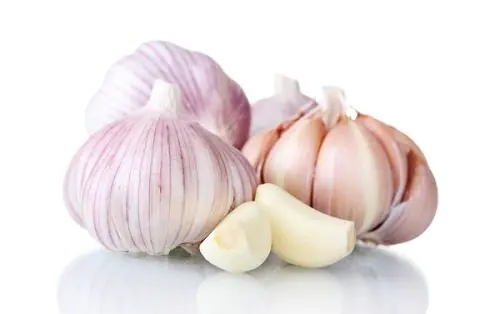
- Pour 3 cups of clean water into a small saucepan and add 4-6 peeled cloves of garlic.
- Boil for 5 minutes and then let cool.
- Wash your hair with the resulting decoction and wait 10 minutes.
- Then rinse with water.
- This process should be repeated once a day.
Honey
Honey is a natural antibiotic, plus it nourishes and moisturizes the skin. Like honey, cinnamon has antimicrobial properties, so it also kills acne-causing bacteria.
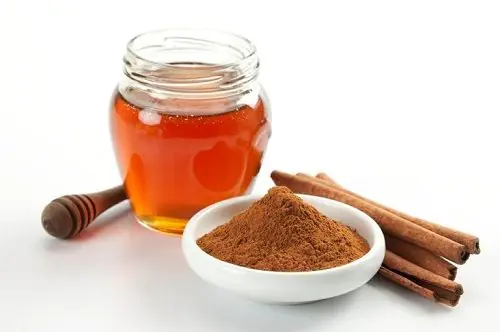
You will need:
- 1/2 teaspoon cinnamon
- 2 tablespoons honey
Preparation:
- Mix honey with cinnamon.
- Apply this mixture on your head for half an hour, then rinse with warm water.
- This remedy will help cure red, painful pimples on the scalp in men.
Sugar and honey scrub
Few people know that regular sugar is also an excellent antiseptic. In earlier times it was used to treat cuts and wounds. A scrub made from sugar and honey gently exfoliates the scalp and helps eliminate pimples in the hair. The sugar particles in this scrub quickly dissolve and therefore do not damage the skin.

You will need:
- 1 teaspoon sugar
- 2 tablespoons honey
Preparation:
- Mix sugar and honey.
- Gently scrub your skin in a circular motion and leave on for 5 minutes.
- Then rinse with warm water.
Also, don’t forget that eating a healthy, balanced diet plays a very important role in treating acne. External treatment will not solve the problem. It is important to eat foods that heal your skin from the inside.
- Vitamin A is essential for healthy skin. So include sweet potatoes, pumpkin, carrots, broccoli, dark green vegetables, apricot, liver and peppers in your diet.
- Eat more beets, which are an excellent liver cleanser.
- Include more fresh vegetables and fruits in your diet, such as peach, apricot, watermelon, raisins, plums, celery. All are rich in antioxidants, fiber, and essential vitamins and minerals.
- Omega-3 fatty acids help restore and rejuvenate the skin. They contain flax seeds, walnuts, pumpkin seeds, salmon, sardines and mackerel.
- In addition, it is important to consume zinc-containing foods. These include pumpkin seeds, sesame seeds, cashews, peanuts, peas, lamb, turkey, lentils, chickpeas and shrimp.
- It's good to eat probiotics. They have a good effect on the intestinal microflora, improve digestion and improve the absorption of nutrients.
In addition to using various folk remedies, the following simple tips will also help men fight acne and improve their overall health and tone.
- Take a course of vitamins or brewer's yeast. This will help cleanse the body of toxins that cause such skin problems. Never squeeze pimples on your head. This will cause the rash to spread, causing pain and itching.
Use a shampoo that contains salicylic acid and wash your hair at least twice a week. Washing them every day is not recommended as this can cause dry scalp and dandruff.
- Men with oily hair should not use conditioner, as this will only worsen the problem.
- Wash your combs regularly with soapy water.
- Wash your hats often.
- Avoid stressful situations.
- Protect your head from direct sunlight.
- Don't abuse alcohol.
- Avoid eating pepper, hot sauces and spices.
- Reduce your salt and sugar intake.
- Strengthen your immune system.
- Drink 7-8 glasses of water a day, as well as green tea and fresh juices.
Acne on the scalp in men usually appears in a mild form and can be dealt with at home. But if they do not go away for a long time, then you should definitely consult a dermatologist.
Acne is a skin disease associated with disruption of the sebaceous glands and hair follicles, which usually appears on the forehead and face, but can also be observed on the scalp, under the hair (on the top and back of the head), on the chest, back, neck and other parts bodies. This disorder is especially common during adolescence, but sometimes occurs in later adulthood.
Why do acne appear on the scalp of men?
The process of acne formation on the head is approximately the same as on other parts of the body. Sebaceous glands are located deep in the skin, the oil they secrete penetrates through the follicles, reaching the surface of the skin and moisturizing it. This is a normal phenomenon and is necessary for the proper functioning of the skin. But sometimes this process is disrupted, which is why acne appears on the skin and under the hair. The causes of acne can be various: from lack of hygiene to hormonal and internal disorders. They also vary depending on the age group.
What causes scalp acne in men?
The main reasons that can contribute to the occurrence of acne on the scalp:
- hormones, especially in adolescence or with endocrine disorders,
- stress,
- hot, humid climate conditions,
- environmental factors such as pollution,
- exposure to certain chemicals and oils,
- medicines such as corticosteroids, lithium, drugs with estrogen or androgens,
- oily scalp,
- dairy products (as they affect hormone levels such as insulin and IGF-1),
- HIV and lupus can cause pimples on the back of the scalp,
- long hair,
- friction or pressure, for example from a helmet, helmet, headgear,
- hair products such as oils, conditioners and gels can cause clogged pores,
- hereditary predisposition,
- Fatty foods, chocolate and nuts do not cause acne (a rash can only appear if you are allergic to these foods).
How do acne form? Typically, inflammation develops due to a combination of three factors:
- Overproduction of sebum by the sebaceous glands.
- Clogged skin pores.
- An increase in the number of bacteria (Propionibacterium acnes), which can cause inflammation.
ACNE ON THE SCALP IN MEN: REASONS
- Acne can be caused by internal problems and immune disorders, such as liver problems or taking antibiotics.
- The appearance of blackheads and acne on the scalp in men can be associated with mechanical factors: a hard hat or the habit of scratching and combing the skin.
- Another cause of this skin defect can be stress, fatigue and depression.
- Any type of allergy can cause a rash; make sure that you are not allergic or irritated to recently purchased cosmetics.
- A common everyday cause of acne on the head in men is a lack of personal hygiene or its excess. Pay attention to your shampoo and other hair care products. If your hair is oily or you use styling products frequently, you should wash your hair daily to prevent clogged oil glands.
- Acne can be caused by disorders that arise from various pathologies, in particular endocrine problems. Acne can also be caused by the use of steroid medications, which are often prescribed for autoimmune diseases.
- For boys, teenagers and boys, who in this case are a high-risk group, the appearance of a rash on different parts of the body is associated with puberty. At this age, the activity of the sebaceous glands greatly increases. For this reason, acne occurs not only on the scalp, but also on other parts of the body (face, back, chest). Clogged pores cause the proliferation of pathogenic microflora inside the hair follicles, which leads to inflamed acne on the scalp. As a rule, teenage acne completely disappears by the age of 18-20.
- Do not forget that acne can be a sign of the onset of a disease, including an infectious one, such as rubella, in which case urgent medical intervention is required. A correct diagnosis can only be made by a specialist, so consult a doctor immediately.
- For young children, the most common cause of rash is an allergic reaction - to new foods, grooming products such as shampoos, pet dander, pollen, household items, medications, clothes the child wears, and toys.
- Infants also suffer from rashes, including on the scalp, even though they are kept in virtually sterile conditions. In this case, the cause may be the incorrect diet of nursing mothers.
TYPES OF ACNE ON THE SCALP IN MEN AND THE REASONS AFFECTING THEIR APPEARANCE
Acne develops when the follicles near the surface of the skin are clogged. Deeper blockages lead to pustules, nodules, and cysts under the skin.
Below are several factors that contribute to the formation of acne on the scalp in men. All of these factors contribute to the formation of acne, either by increasing sebum production or by clogging the hair follicles and therefore attracting bacteria that cause inflammation.
- Overproduction of sebum
Sebum plays a big role in the formation of acne. When its production increases, the chances of clogged pores also increase. There are several factors that can increase sebum production in men, including hormones, genetics, and medications.
- Hormonal changes and scalp acne in men
One of the main reasons why a man may suffer from scalp acne is due to hormone fluctuations. In addition to adolescence, changes in hormonal levels are observed with the use of steroids and drugs that affect the endocrine system, endocrine disorders (for example, diabetes, thyroid or adrenal disorders), and age-related changes in hormone levels.
- Oily scalp and acne
Experts believe that oily hair or skin can significantly influence the formation of acne on the scalp. If the scalp remains oily for a long time, after a while it can lead to clogged pores. The condition may be more severe in people with excessively oily skin.
If a man suffers from inflamed pimples on the scalp, this could be a sign of folliculitis, caused by damage to the hair follicle by mites (demodex), bacteria or fungi. It is more common among men with oily scalp and hair types. In severe cases, boils may appear, which later lead to scarring.
- Pimples on the head of men after shaving
Shaving the scalp often leads to acne, especially when the hair is shaved in the wrong direction or using blunt instruments. In this case, ingrown hairs occur, which will form inflammation and acne on the bald head of men.
- Eczema, psoriasis and dermatitis
Eczema and psoriasis are skin diseases that cause inflamed pimples. Eczema in particular involves dry, itchy scalp due to dandruff. Dermatitis herpetiformis (Herpetiformis) can also cause small pimples on the scalp in men. In this case, they may spread to other areas, for example, elbows, knees, back, shoulders.
Pimples on the scalp can be a sign of cancer. Scalp cancer can present with a variety of symptoms, including black lesions or pink “waxy” bumps.
Types of acne on the scalp in men
Acne on the scalp can have different manifestations and symptoms. Formations come in different sizes, shapes, and colors. Below are the most common types of acne that occur on the scalp of men.
Small pimples that rise above the skin are usually formed due to one of the above factors. The formations may be red, yellow or white and may be accompanied by slight pain. Usually after some time they disappear on their own. If this does not happen, you should consult a doctor to find out the exact cause of the formations.
- Itchy red pimples on the scalp in men
May indicate a lice infestation. When insects bite through the skin to drink blood, small, itchy, hard pimples appear on the scalp. They are usually painless to the touch. Itchy pimples can also develop due to stress, allergies and other factors. As a rule, they do not lead to dandruff.
- Painful pimples on the scalp
Scalp acne in men that becomes inflamed can be very painful to touch. These include pustules, nodules and cysts that form deeper in the skin. Their appearance can be triggered by scratching, which attracts a bacterial infection into the tissue, which causes redness and pain. Such pimples are purulent and sometimes turn into boils, which can be life-threatening. Over time, they may leak fluid or pus, become dry and form crusts or scabs that may bleed, especially if scratched or damaged.
Such acne forms when a bacterial infection does not attach and there is no inflammation. Pimples without itching are usually a mild form of acne.
Sometimes they are not visible due to the thick hair that hides them. A man can feel them only when washing, styling or combing his hair. Typically, a factor that can influence the development of pimples under the scalp is a lice infestation or psoriasis. An allergic reaction is also possible. In this case, you need to visit a dermatologist.
ACNE ON THE SCALP IN MEN: TREATMENT
5 basic tips for preventing and fighting acne
- Use men's shampoo with salicylic acid
Salicylic acid is a powerful ingredient that helps get rid of scalp acne and prevent recurrence. Shampoos containing selenium sulfide or salicylic acid (for example, Psoril or Selencin) can be effective in getting rid of itchy lesions, including those caused by ringworm. In addition, lotions containing lard can be used on the scalp and neck. to-that. For effective results, combine medicated shampoos and antifungal drugs.
Tar shampoo helps with acne caused by seborrheic dermatitis.
- Avoid irritating hair products
Some men's hair products can make the scalp more oily, clogging pores and increasing the risk of acne. If any product causes dandruff or itching, its use should be discontinued immediately.
- Do not use acne products containing benzoyl peroxide
Although benzoyl peroxide creams and gels are an effective treatment for acne, including in men, they should not be used on the scalp. When benzoyl peroxide comes into contact with hair, it can bleach and discolor it, leaving hair brittle and damaged. This is a rather aggressive product, which, in addition, can cause irritation, peeling and severe dryness of the skin.
- Choose a shorter hairstyle
If a man has long hair, the risk of acne on his head increases. Constant contact of hair with the skin of the neck, forehead, and temples aggravates the situation, causing increased sweating and bacterial growth.
- Don't squeeze pimples on your head
Squeezing pimples on your head is a sure way to spread the infection and cause acne scars. Scalp acne is usually temporary, but scars can last a lifetime.
How to treat acne on the head: additional treatment methods and folk remedies
- Oral and local antibiotics
If an infection occurs, your doctor may prescribe antibiotics to treat your acne. Steroid creams and ointments may be used to stop the itching. Oral antibiotic tablets are prescribed for severe cases of the disease, as they can cause side effects and, if used incorrectly, can lead to the development of secondary infections or superinfections.
External antibiotics for acne include products containing clindamycin: “Zerkalin” solution, “Klindovit” gel, “Klenzit-S” with adapalene. Antibiotic tablets: amoxicillin, clindamycin, erythromycin, doxycycline, josamycin, etc.
This type of treatment is used for severe and persistent pimples or blackheads. These are strong medications that have side effects and contraindications and are used only when other treatment methods are no longer effective. Lighter preparations with isotretinoin include the solution for external use "Retasol".
In addition to the above treatment methods, the doctor may prescribe antiandrogen drugs, cosmetics and pharmaceutical products with acids.
Home Remedies for Scalp Acne in Men
For less severe acne, medical intervention may not be necessary, in which case natural remedies can be used. Below are some of the most popular folk methods that help cure mild scalp acne:
- tea tree oil,
- homemade natural apple cider vinegar,
- aloe vera.
All these products are used externally, the affected area is lubricated no more than 2-3 times a day to avoid unnecessary trauma and irritation of the skin.
Sometimes temporary refusal of shampoos and switching to natural means for washing the hair - black bread, egg yolk - as well as rinsing with herbal decoctions can relieve itching and redness.
In addition to medical procedures and treatments, it can be helpful to change your daily habits.
- Wash your hair regularly to avoid the buildup of dead skin cells and excess sebum in your hair.
- Do not strain your scalp with tight hairstyles (ponytail, etc.).
- Avoid wearing hats for long periods whenever possible.
- Practice good hygiene when shaving your head.
- Avoid excessive sun exposure without covering your head.
- Take a shower or bath immediately after exercise or physical activity to remove sweat.
- Watch your diet and control your medications.
Pimples on the scalp in men usually appear in a mild form and go away on their own when the causes of their appearance are eliminated. If skin lesions do not go away for a long time or the condition worsens, be sure to consult a doctor.



